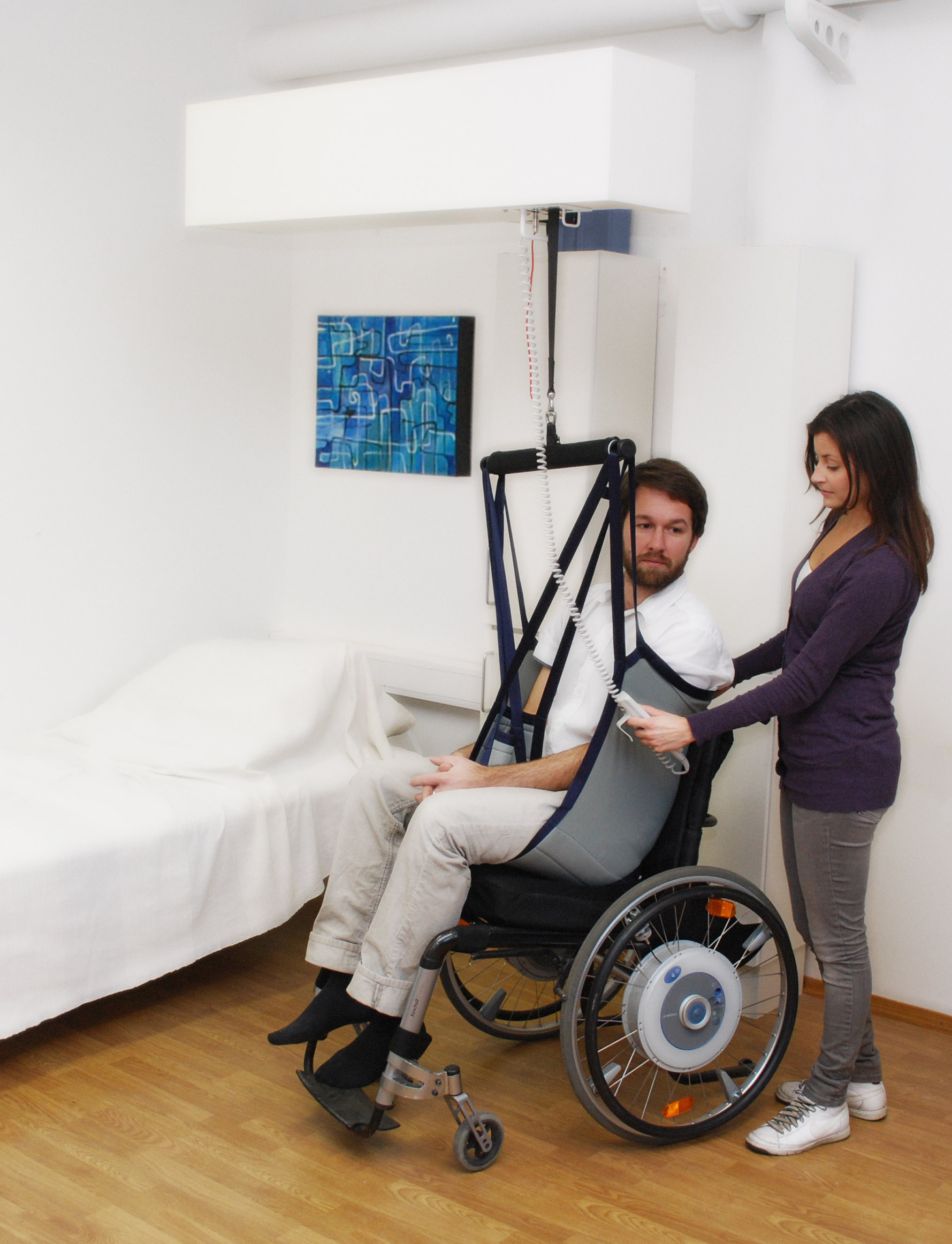Patient mechanical lift handling equipment is a type of medical device used to assist healthcare professionals in safely lifting, transferring, and repositioning patients who have limited mobility or are unable to move on their own. These devices are designed to reduce the risk of injury to both the patient and the healthcare professional, while also providing a more comfortable and dignified experience for the patient.
There are several different types of patient mechanical lift handling equipment, including floor lifts, ceiling lifts, and portable lifts. Floor lifts are typically used to transfer patients from a bed to a wheelchair or other mobility device, while ceiling lifts are installed overhead and can be used to transfer patients between different surfaces, such as a bed and a shower. Portable lifts are designed to be easily moved from room to room and can be used to transfer patients in a variety of different settings.
Patient mechanical lift handling equipment is used in a wide range of healthcare settings, including hospitals, nursing homes, and in-home care settings. It is an important tool for healthcare professionals, as it allows them to provide safe and effective care to patients with limited mobility, reducing the risk of injury and improving patient outcomes.
What is a mechanical lift for patients?
A mechanical lift for patients is a type of medical equipment used to assist healthcare professionals in safely lifting, transferring, and repositioning patients who have limited mobility or are unable to move on their own. The device typically consists of a motorized mechanism, such as a hydraulic system, and a sling or other support device that is attached to the patient.
The mechanical lift helps to reduce the risk of injury to both the patient and the healthcare professional by reducing the physical effort required to move the patient and distributing the weight of the patient more evenly. This can be especially important for patients who are overweight or have conditions that make movement difficult, as it reduces the risk of strain or injury to the caregiver.
Mechanical lifts are used in a wide range of healthcare settings, including hospitals, nursing homes, and in-home care settings. They come in several different types, including floor lifts, ceiling lifts, and portable lifts, and are designed to meet the specific needs of different patient populations.
Overall, mechanical lifts for patients play an important role in improving patient outcomes and providing a safer and more dignified experience for patients with limited mobility.
Download Free Sample PDF:
https://www.alliedmarketresearch.com/request-sample/1909
How big is the medical equipment market?
The global medical equipment market is a large and growing industry. The market is expected to continue to grow in the coming years, driven by factors such as an aging population, increasing rates of chronic diseases, and advances in medical technology.
The medical equipment market can be divided into several subsegments, including:
- Diagnostic imaging equipment: This includes equipment such as X-ray machines, MRI machines, and CT scanners, used to create images of the body’s internal structures.
- Medical devices: This includes a wide range of devices, such as surgical instruments, dental equipment, and artificial joints, used to diagnose and treat medical conditions.
- Monitoring and life support equipment: This includes equipment such as patient monitors, ventilators, and oxygen concentrators, used to monitor and support patients with chronic or life-threatening conditions.
- Laboratory equipment: This includes equipment used in medical laboratories, such as centrifuges, microscopes, and blood analysis systems.
Each subsegment of the medical equipment market has its own drivers and challenges, and the size and growth of each segment can vary depending on factors such as advancements in technology, regulatory requirements, and healthcare spending patterns.
Overall, the medical equipment market is expected to continue to grow in the coming years, driven by increasing demand for medical services and advances in medical technology. This presents opportunities for companies that provide medical equipment and services to meet the needs of an aging population and growing healthcare industry.
What is the future of Patient Mechanical Lift Handling Equipment?
The future of patient mechanical lift handling equipment is expected to be characterized by several key trends, including:
- Increasing demand for safe and efficient patient handling: The demand for safe and efficient patient handling equipment is expected to increase as the population ages and more people require assistance with mobility. This is likely to drive innovation and the development of new and improved patient lift systems.
- Advancements in technology: The use of new technologies, such as wireless remote controls, sensors, and motors, is expected to lead to the development of more advanced and sophisticated patient lift systems. These systems are likely to be more efficient, safer, and easier to use.
- Greater focus on patient comfort: There will be a growing emphasis on patient comfort in the design of patient lift systems, with manufacturers focusing on developing equipment that is more comfortable for patients to use.
- Increasing use of home healthcare: The trend towards home healthcare is expected to continue, with more patients receiving care at home rather than in hospitals or nursing homes. This will likely increase the demand for patient lift systems that are portable and easy to use in a home setting.
- Growing awareness of ergonomic safety: There is a growing awareness of the importance of ergonomic safety in the healthcare industry, and this is expected to drive the development of patient lift systems that are more ergonomically designed to reduce the risk of injury to healthcare workers.
Overall, the future of patient mechanical lift handling equipment is expected to be characterized by continued innovation, advances in technology, and a focus on patient comfort and safety. The increasing demand for home healthcare and greater awareness of ergonomic safety will also play an important role in shaping the future of this market.
Contact:
David Correa
USA/Canada (Toll Free): +1-800-792-5285, +1-503-894-6022


